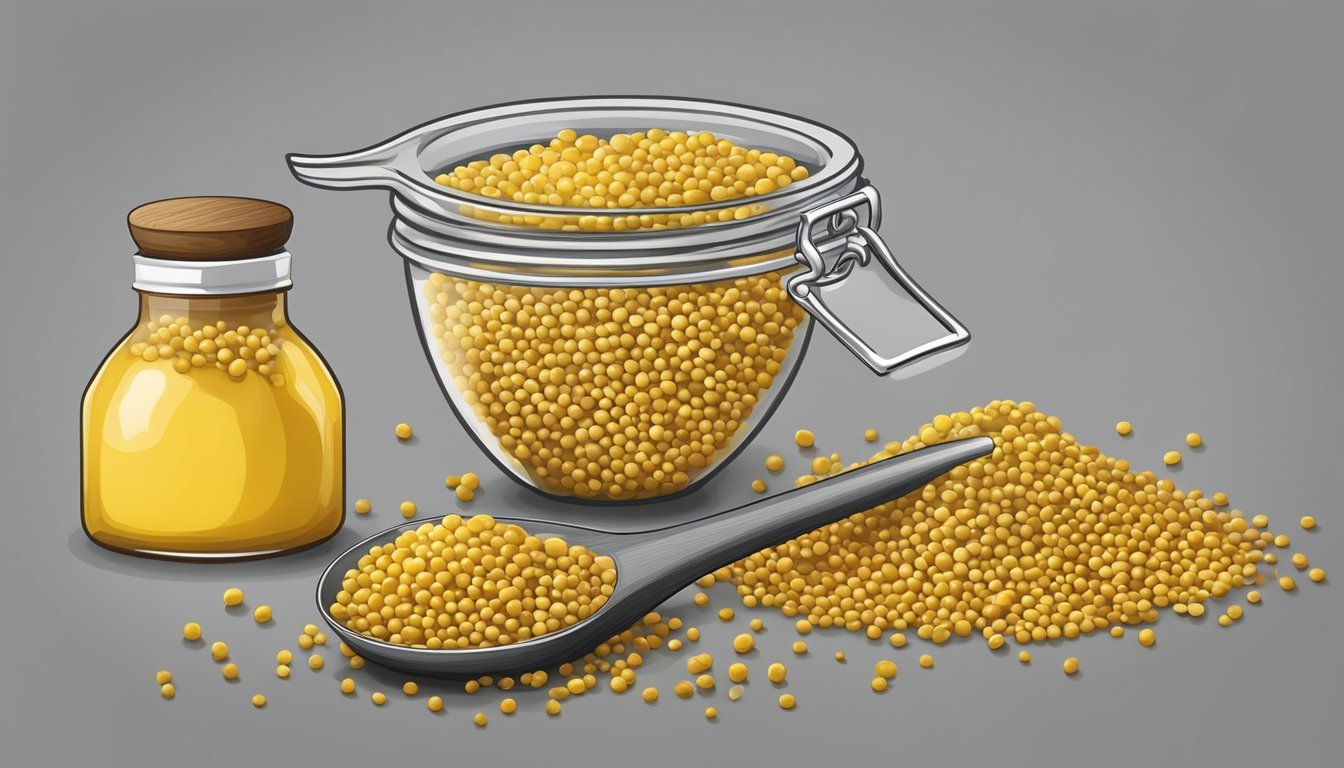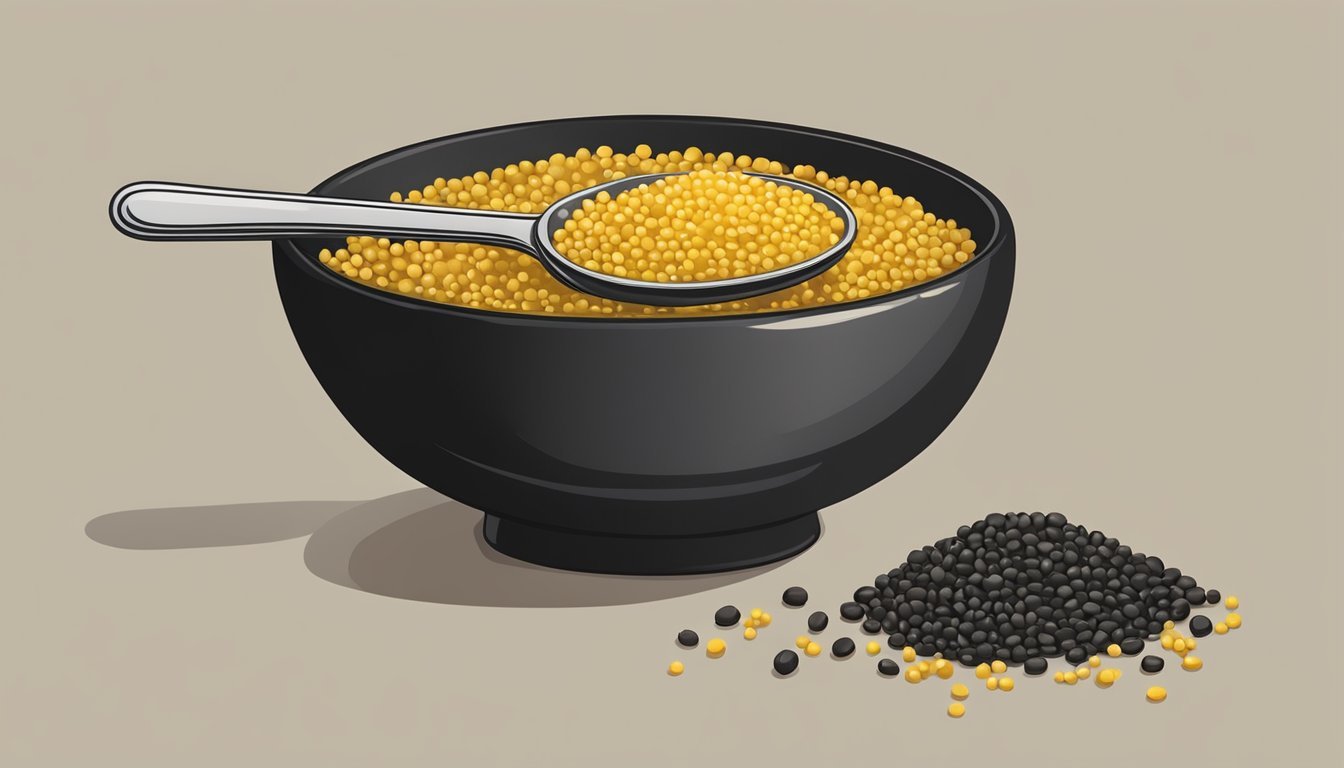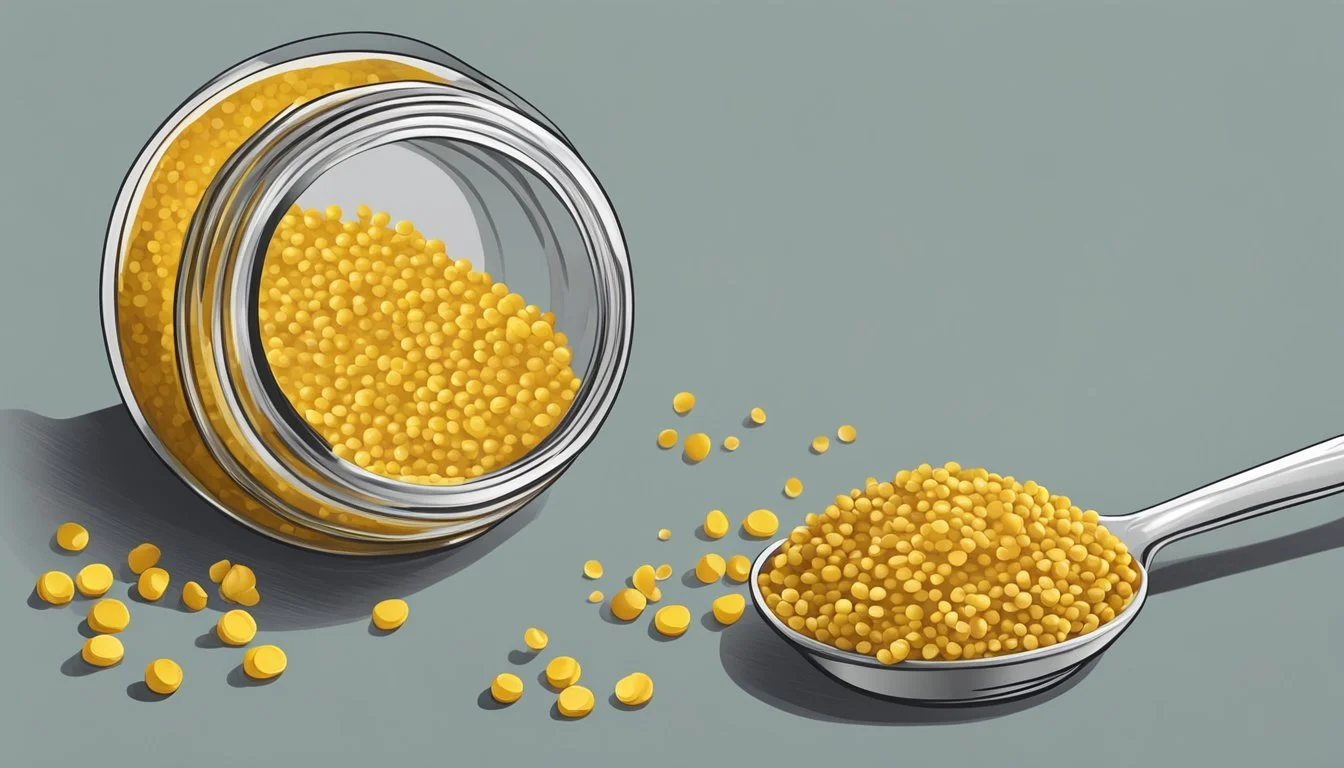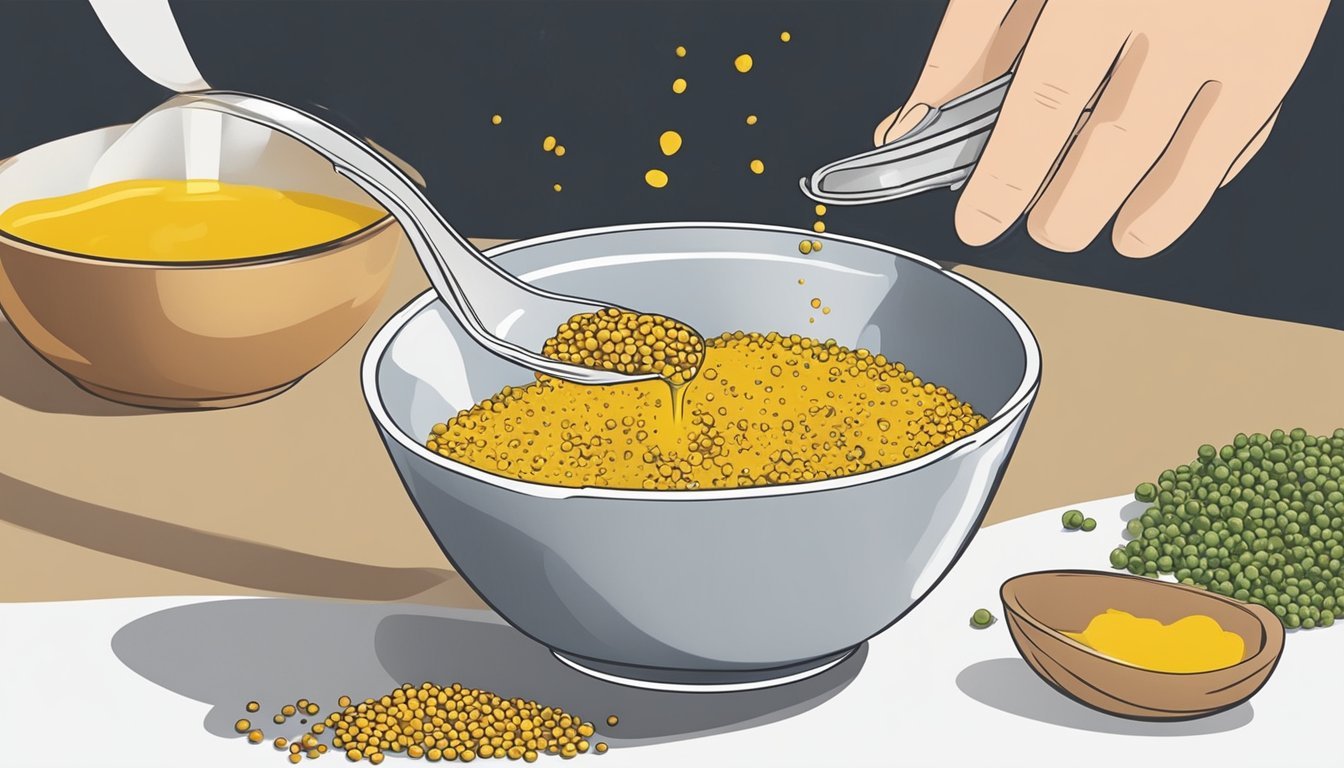How to Substitute Dry Mustard for Mustard Seed
A Simple Conversion Guide
Mustard seeds are a staple in various cuisines, lending a spicy kick and aromatic presence to dishes around the world. However, there are times when one may find themselves without these piquant little seeds in the middle of cooking. In such instances, dry mustard, a powdered form made from ground mustard seeds, emerges as a reliable substitute. Dry mustard effectively infuses the dish with the desired mustard flavor and, thanks to its powdered form, can blend seamlessly into recipes.
When replacing mustard seeds with dry mustard, the key is to understand the potency difference between the two forms. Dry mustard is more concentrated and can impart a more intense heat. Therefore, it is generally recommended to use a one-for-one substitution ratio, meaning one tablespoon of dry mustard for every tablespoon of mustard seeds called for in a recipe. This direct swap will preserve the mustard flavor profile while taking into account the variance in concentration and texture.
In culinary applications where mustard seeds serve a textural purpose or contribute to the visual appeal of a dish, adjustments may be necessary. These can include combining dry mustard with a small amount of liquid to reconstitute it, maintaining the balance of wet and dry ingredients within the recipe. By incorporating these considerations, cooks can confidently navigate the substitution process and ensure the integrity of their dishes is maintained.
Understanding Mustard Seeds
Mustard seeds are an integral ingredient in various cuisines, contributing their unique flavor and versatility in both whole and ground forms.
Types of Mustard Seeds
Mustard seeds come primarily in three varieties:
Yellow Mustard Seeds: Also known as white mustard seeds, these are the mildest in flavor and are typically used in American and European cuisine.
Brown Mustard Seeds: These seeds have a more pungent flavor and are used in a variety of dishes, including Indian cooking.
Black Mustard Seeds: The most intense in flavor and heat, black mustard seeds are commonly used in Indian and Southern Asian recipes.
Flavor Profile
Mustard seeds have a distinct flavor profile that varies with type:
Yellow/White: Mild and slightly tangy
Brown: More intense with a nutty and spicy edge
Black: Strongly spicy and the most pungent
Uses in Cooking
Mustard seeds are used in a broad range of dishes. A common use is as a spice in curries and stews. They are also used to season chicken, meat, and fish dishes. When ground, mustard seeds add a tart and spicy flavor to soups and dressings.
Mustard Seed as a Condiment
Ground mustard seed, combined with vinegar and other spices, creates the ubiquitous condiment used on hot dogs, veg sides, and sandwiches. Mustard seeds can be pickled for an extra zing or added to mayonnaise for a more subtle flavor.
Dry Mustard Basics
Dry Mustard, also known as mustard powder or ground mustard seed, is a staple spice that holds versatility in its applications ranging from spices blends to pickling brines. This section explores its fundamental aspects and common culinary uses.
What is Dry Mustard
Dry mustard is made by grinding mustard seeds into a fine powder. It comes from the same plant as the seeds and has a potent, piquant flavor that intensifies when mixed with water. The powder's heat and sharpness can vary depending on the mustard seed variety used, which can range from yellow mustard seeds, known for their mildness, to the more robust brown and black seeds.
Common Uses
Dry mustard is widely used in a variety of dishes and condiments thanks to its powerful flavor profile. Below are some of the common ways dry mustard is used in cooking:
Spices Blends: It's an integral component in spice mixes, such as curry powders, rubs for meats, and seasoning salts.
Marinades: The powder acts as an emulsifier and flavor enhancer in marinades, imparting a tangy taste to meats and vegetables.
Pickling Brines: Its preservative properties make it ideal for pickling brines, contributing both flavor and shelf life to pickled products.
Chutneys: Dry mustard adds depth and complexity to chutneys, complementing the sweetness of fruits and other ingredients.
Substituting Mustard Seeds
When a recipe calls for mustard seeds, and one finds themselves without, there are several suitable substitutes that can mimic the flavor, texture, and color of mustard seeds.
Why Substitute Mustard Seeds
Substitutes for mustard seeds may be sought for various reasons: availability, dietary restrictions, or a desire for a different flavor profile. Mustard seeds provide a certain heat and piquancy to dishes, along with a characteristic texture that is not easily replicated. Their role in recipes extends beyond taste to include enhancements in the aesthetic and the overall mouthfeel of culinary creations.
How to Choose a Substitute
Selecting an appropriate mustard seed substitute depends on the specific properties one wishes to emulate. Here are some factors to consider:
Flavor: A substitute should provide a similar heat and spice level.
Texture: Some substitutes offer a crunchy quality similar to whole mustard seeds.
Color: The seed or spice chosen may also contribute to the visual appeal of the dish.
Table of Mustard Seed Substitutes:
Substitute Flavor Profile Texture Color Contribution Ratio Whole-Grain Mustard Spicy and less pungent Crunchy Consistent with mustard seed 1:1 (tbsp mustard seed: tbsp whole-grain mustard) Ground Mustard (Dry) Sharp and pungent Smooth Similar to mustard seed 1:1 (tsp mustard seed: tsp ground mustard) Wasabi Intensely hot Smooth Pale green Start with less and adjust to taste Caraway Seeds Slightly warm, bitter Crunchy Brown 1:1 (tsp mustard seed: tsp caraway seeds) Turmeric Warm, slightly bitter Smooth Bright yellow 1:1 (tsp mustard seed: tsp turmeric) Cumin Seeds Strong, earthy Crunchy Brown Start with half and adjust to taste Fenugreek Seeds Bitter, sweet Crunchy Yellowish-brown 1:1 (tsp mustard seed: tsp fenugreek seeds)
For best results in flavor and texture, the substitute chosen should closely align with the properties of mustard seeds that are critical to the intended dish.
Substitute Ingredients
When a recipe calls for mustard seeds and none are available, several effective substitutes can offer a similar taste or texture, ensuring the dish maintains its intended flavor profile.
Prepared Mustard
One simple solution is using prepared mustards like Dijon or stone-ground mustard. These mustards contain whole or cracked mustard seeds, providing a textural and flavorful analog to whole mustard seeds. A good rule of thumb is a one-for-one replacement by volume. For instance, if the recipe requires a teaspoon of mustard seeds, one can use a teaspoon of prepared mustard. It's crucial, however, to adjust the liquid ingredients in the recipe to account for the extra moisture from the prepared mustard.
Other Spice Substitutes
For a dry substitute that mimics the fiery quality of mustard seeds, options include:
Wasabi or horseradish: These can be used in place-by-place measures for a similar sharp, pungent flavor, though they are significantly spicier.
Turmeric: Though less spicy, turmeric provides a yellow color akin to mustard and can serve as a 1:1 substitute.
Caraway seeds, cumin, or chili: These can add a different but complementary taste profile. Start with a smaller amount and adjust to taste, as these spices have distinct flavors.
All alternatives should be considered based on the recipe's flavor profile and the substitute's compatibility with other ingredients.
Creating a Mustard Seed Mix
To craft a homemade mustard seed mix, one might blend available substitutes like ground mustard with other compatible spices. Use a coffee grinder or mortar and pestle to mix together compatible flavors such as cumin seeds, ginger, paprika, sage, or even a touch of licorice for a complex flavor profile. Here's an example blend for one teaspoon of mustard seeds:
1/2 teaspoon ground mustard (dry mustard)
1/4 teaspoon turmeric
1/8 teaspoon cumin
A pinch of paprika
A pinch of ground ginger
Mix thoroughly to ensure even flavor distribution. This mix can be adjusted according to culinary needs and personal taste preferences.
Conversion Ratios
When substituting dry mustard for mustard seeds, it is crucial to understand the right quantities to use and how liquid components affect the potency and flavor of the mustard.
Dry Mustard to Mustard Seeds
To replace mustard seeds with dry mustard in recipes, one needs to know the correct conversion ratio. Typically, one teaspoon of dry mustard is equivalent to one tablespoon of mustard seeds. This rule generally applies regardless of whether one is utilizing yellow, brown, or black mustard seeds. It is important to remember that dry mustard is more concentrated, and therefore less is required to achieve a similar flavor profile.
Yellow mustard seeds: milder in taste; use a 1:3 ratio of dry mustard to seeds.
Brown/Black mustard seeds: have a more pungent flavor; adhere to the standard 1 teaspoon of dry mustard to 1 tablespoon of seeds but consider starting with less and adjusting to taste due to their intense flavor.
Liquid Components in Substitutions
The introduction of liquids in mustard substitutions is essential as they activate the pungency and acidity in the mustard. When substituting dry mustard for seeds, it is often necessary to consider adding a liquid such as vinegar, water, white wine, or lemon juice to achieve the correct consistency and flavor. The ideal ratio for liquid to dry mustard when creating a paste is approximately one part dry mustard to one part liquid.
Vinegar: gives a sharp tangy profile, commonly used.
Water: results in a milder mustard without the tanginess.
White wine or wine vinegar: offers a more complex, nuanced taste.
Lemon juice: adds a fresh citrus note to the mustard.
One should mix the dry mustard with the chosen liquid and let it sit for at least 15 minutes to fully develop the flavor. The specific choice of liquid can be adjusted based on the desired outcome of the recipe and personal preference.
Adjusting Recipes
When substituting dry mustard for mustard seeds in recipes, the goal is to match the flavor intensity and texture without overshadowing other ingredients. Attention to detail ensures the dish maintains its original character.
Maintaining Balance of Flavors
In most recipes, mustard seeds offer a pungent and spicy element that is essential to the dish's profile. Dry mustard can replicate this, but might introduce more heat. To moderate the flavor, one might consider mixing one teaspoon of dry mustard with a dash of water, allowing it to sit for a few minutes to develop flavor. For a tangy twist, vinegar can be added, and for sweetness, a pinch of sugar, honey, or brown sugar should be considered. This maintains the balance and complements other ingredients.
Replacing Mustard Seeds in Recipes
Replacing mustard seeds with dry mustard is straightforward:
Texture: Mustard seeds add texture to dishes. If the recipe relies on this, consider adding a small number of whole-grain mustard seeds to the dry mustard to keep the texture intact.
Flavor: A typical ratio is one tablespoon of mustard seeds equals one teaspoon of dry mustard.
Color: Dry mustard is often a bright yellow, which could affect the overall look of the dish. Adjust other colorful spices accordingly to achieve the desired appearance.
Addition of Complementary Spices and Herbs
When dry mustard is used as a substitute, it may alter the flavor balance in a recipe. One can introduce complementary herbs and spices to create a more complex flavor profile:
Herbs: Consider adding a bay leaf or some dill to round out the flavors.
Spices: Peppercorns and allspice can complement the mustard's heat without overpowering the dish.
Each addition should be used sparingly to avoid overwhelming the primary mustard flavor—the objective is to enhance, not dominate.
Cooking Tips and Tricks
When substituting dry mustard for mustard seed, one should consider flavor enhancement, texture, and proper storage to maintain the integrity of the dish being prepared.
Enhancing Flavor with Substitutes
When a recipe calls for mustard seeds, one can replace them with dry mustard to achieve a similar flavor profile. Dry mustard typically imparts a more potent, pungent flavor as opposed to the more mellow heat from mustard seeds. A one-to-one substitution with whole-grain mustard can also preserve the visual and flavor characteristics, as it contains mustard seeds. For a zesty or tangy kick, a Dijon-style mustard can be a suitable alternative. To match the heat of mustard seeds, consider using half the quantity of spicy brown mustard, as it's richer in flavor.
Texture Considerations
Texture plays a pivotal role in cooking. Mustard seeds contribute to the overall texture of a dish, often adding a bite or a thickening property. Substitutes like mayonnaise or creamy condiments can mimic the texture mustard seeds provide, especially in dressings or sauces. When using a liquid substitute like Dijon-style mustard or spicy brown mustard, it's important to adjust other liquids in the recipe to maintain consistency. For a like-for-like replacement, ground mustard maintains a similar texture to that of mustard seeds.
Storing Substitute Mixtures
Proper storage of substitute mixtures is crucial for flavor preservation and food safety. An airtight container is recommended for storing dry mustard to prevent moisture from clumping the powder. Mixtures containing mustard should be stored in the refrigerator if they include perishable ingredients. Home-made preparations involving vinegar or acidic components can help with the preservation of the substitute mixture, potentially extending its shelf life while keeping flavor profiles intact.
Mustard Seed Health Benefits
Mustard seeds are a highly regarded condiment, dating back to ancient culinary practices. They offer a variety of nutritional benefits that can contribute to overall health and wellness.
Nutritionally, mustard seeds are a rich source of various vitamins and minerals. They contain significant levels of vitamins A and C, which are important antioxidants that help in protecting cells from damage caused by free radicals. Additionally, these seeds are rich in vitamin B6, which plays a crucial role in metabolic processes and the maintenance of a healthy nervous system.
Regarding their mineral content, mustard seeds provide magnesium, which is vital for bone health and regulating nerve and muscle function. They also contain potassium, a mineral that helps with blood pressure control and cardiovascular health. Omega-3 fatty acids, present in these seeds, are crucial for heart health and maintaining a balanced inflammatory response in the body.
Here is a brief snapshot of their nutritional profile per teaspoon (2 grams) of mustard seeds:
Nutrient Amount Calories 11 Protein 0.8 g Carbohydrates 0.6 g Fiber 0.3 g Total Fat 0.8 g Omega-3 0.1 g
Mustard seeds are also linked with medicinal uses. Historical evidence suggests that they have been used to help treat conditions such as psoriasis, and as anti-inflammatory agents.
They are also believed to contribute to a diet that supports the body’s ability to ward off certain diseases due to their antioxidant properties. However, like all foods, the benefits of mustard seeds can be best realized as part of a balanced, nutritious diet.










